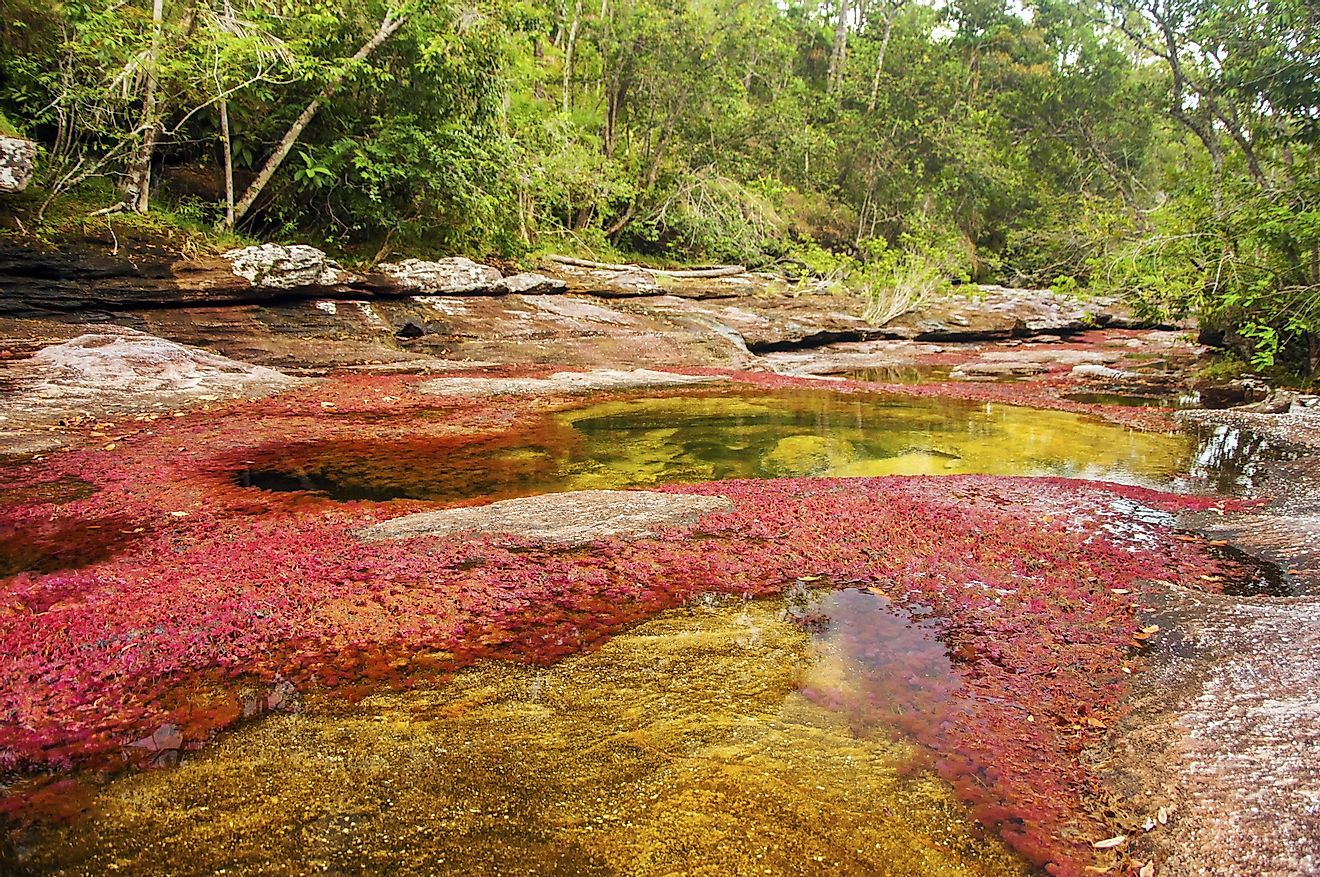Caño Cristales River, Colombia - Unique Places around the World

5. Description
Located in an isolated mountain range, Serrania de la Macarena, in the department of Meta, Colombia, Caño Cristales is also commonly known, among many other monikers, as the “River of Five Colors”. It gains its names and reputation for being one of the most beautiful rivers in the world from the brilliant, changing colors of the aquatic plants that line the bottom of the river. Considered part of the plains of Eastern Colombia, the river is in a remote area with only small towns nearby. Despite being in a more mountainous terrain, he local climate is fairly temperate all year round, and is separated into two distinct seasons: the wet season and the dry season.
4. Tourism
In recent years, the popularity of this site has boomed, and a large variety of tours are increasingly being offered by local companies. Tours only run during the wet season (June to December) as the water levels get too low during the dry season (January to May) to support the aquatic plants. Out of all the months of the wet seasons, the best time to visit the river is between September and November, when conditions are said to be optimal. With a small local airport on the outskirts of La Macarena, a small town that most people have to go through to reach Caño Cristales, tourists can easily fly in from Bogotá, the capital of Colombia, or Villavicencio, the capital of the Meta department.
3. Uniqueness
Prior to 2009, Caño Cristales was considered inaccessible due to the Revolutionary Armed Forces of Colombia (FARC), a guerrilla movement, who remained active. Since then, however, the Colombian military has taken control over the area, and continues to keep the area around La Macarena safe for tourists. Many used to think that it was the algae or moss giving the river its colors, but it turns out that it is actually a subaquatic plant called Macarenia clavigera that is behind the vibrance. Depending on which month it is, this plant can be any shade of red, blue, yellow, orange, and green, or some combination of these colors (hence, the River of Five Colors).
2. Habitat
Serranía de la Macarena, the national park Caño Cristales is situated in, is mostly considered part of the Eastern Plains (Los Llanos) but is also on the border of the Andes Mountains and the Amazon Rainforest. As a result, the area has one of the highest levels of biodiversity in the world. The species of flora (including the Macarenia clavigera in the water) and fauna number in the thousands, many of which are critically endangered. Some of the more recognizable creatures include anacondas, capybaras, a number of species of monkeys, and jaguars. There are no fish in the waters of Caño Cristales, but there is an abundance of plant life and microorganisms.
1. Threats
Given the delicateness of the local ecology and that of the Macarenia clavigera, the locals and their government have taken precautions to preserve their river with a number of conservation laws. Only 200 people are allowed to visit the site each day, overnight stays in the park are forbidden, and, in areas where swimming is permitted, insect repellent and sunscreen lotion is banned to reduce chemical contaminant pollution. Unfortunately, climate change and deforestation are still issues that Colombians are working to address in the area. Other issues the area faced have been due to the drug trade and the aforementioned FARC guerrillas before the Colombian military stepped in over the past several years. The park's safety has been much improved since then, and tourists need not worry, as tour groups will take precautions to avoid any potential danger zones.







